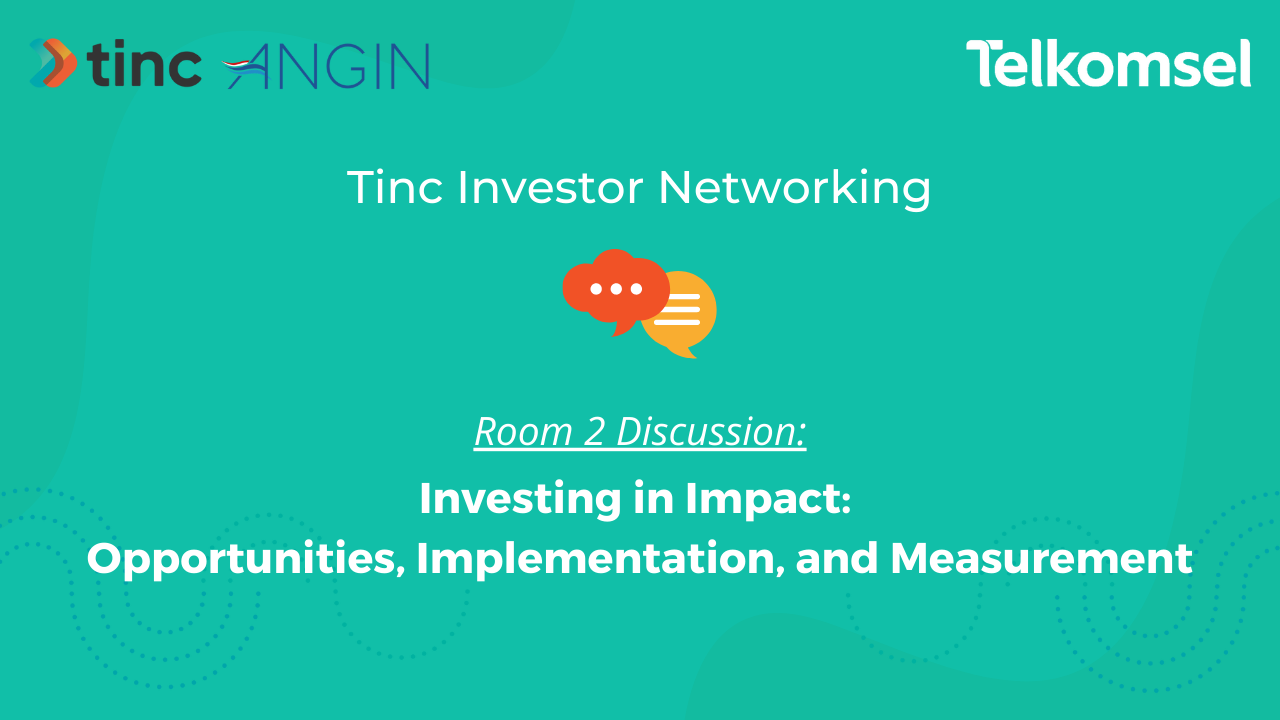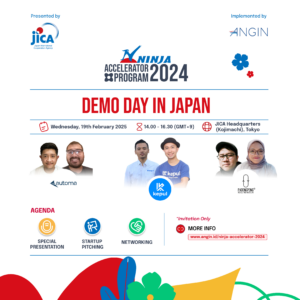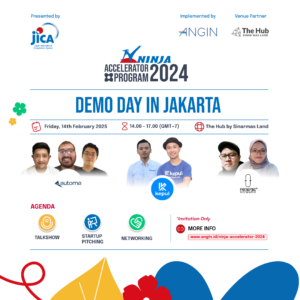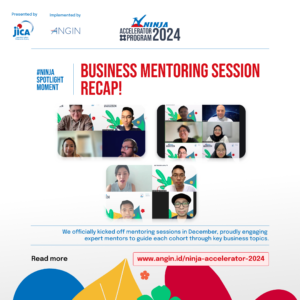This article is written based on the discussion note on Tinc Investor Networking.
Demystifying impact investing myths around low financial return: The future of impact investing and the opportunities
The terms impact investment and social entrepreneurship were coined to define organizations that could reconcile the desire to create an impact while also having a commercial or financial intention. Beyond the intention, these organizations commit to measuring, evaluating, and reporting their impact to drive better decisions and strategies to achieve their social mission. This impact investment generation emerged in Indonesia in the early 2010′s [1]. Since its emergence, there was an underlying perception that impact investing was similar to philanthropy whereas impact investors yield lower financial return compared to commercial investors.
However, most studies report that Socially Responsible Investments (SRI) do not have lower returns than traditional investments. In fact, there is evidence of the opposite; most conclusions point to SRI having higher returns, especially when social impact is taken into account. A comprehensive review by the Royal Bank of Canada looked into over 40 major studies and found that there was no evidence that socially responsible investing resulted in lower investment returns [2]. This sentiment was echoed by the GIIN’s (Global Impact Investing Network) 2017 Annual Impact Investor Survey [3], which found that the majority of respondents achieved market-rate returns, with 91% claiming their returns met or exceeded their professional expectations.
A survey by Morgan Stanely released in 2018 [4] mentioned that 76% investors believe that a perception remains among some investors that sustainable investing requires a financial tradeoff, However, they claim the opposite, where 87% of respondents believe it is possible to achieve financial returns alongside a social or environmental impact. And 62% go even further, agreeing that it is possible to maximize returns while investing sustainably.
This perception was echoed by investors that participated in the Tinc Investor Networking Day:

Reena Sharma, Vice President of Investor Relations at Investible shared that Investible’s investment decisions are made based on financial performance for the company, while impact is used as an additional filter after an investment passes the desired financial profile.
Beenext’s Partner, Faiz Rahman also added that there is an opportunity to maximise profit while implementing an impact lens.

Rexi Chritopher from init-6 fund shares the same value that Impact investing is a mindset: any startup that is challenging the status quo is working on creating impact.
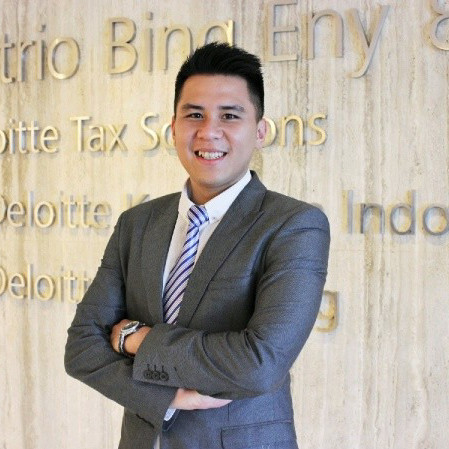

Emphasizing on the context of “invest” in impact investment, it is necessary to distinguish impact investment from non-profit practices, such as donations or grants. The investor attendees on Tinc Investor Networking agree that financial returns and performance are still key considerations behind impact investment decisions. This means that there is a fundamental distinction between for-profit, non profit, and for-profit with social mission, in which impact investment falls for the latter.
Measurement of Impact and ESG
Impact investments, as defined by GIIN’s (Global Impact Investing Network), are “investments made with the intention to generate positive, measurable social and environmental impact, alongside a financial return” [5]. The word ‘measure’ plays an interesting role in this ecosystem. As an investment is repayable finance, investors will want to see the evidence of financial return and revenue from the business.
Yet in impact investment, the responsibility doubles up; both social and financial return are to be expected. This is what differentiates impact investors from mainstream investors or traditional funds. Impact investors want to know how investing into a business will enable them to create a positive impact on society, and in order to know, one has to measure.
Measuring impact is indeed a complicated process, especially for early-stage business or startups. However, Kejora-SBI Orbit stated the importance of having at least one dedicated ESG officer that can measure impact within the scope of Environment, Social, and Governance (ESG). This statement is echoed in The S&P 500 ESG Index: Defining the Sustainable Core [6] as a signal of evolution in sustainable investing, built to underlie strategic, long-term mainstream investment products.
As Kejora looks into this index, they found out: impact investment actually follows where the money is.


ESG is an increasingly popular tool of measurement when it comes to sustainability efforts, and also to giving companies a space for improvement. Yet in practice, no matter how sophisticated the tool is, measurement is much easier at capturing quantifiable inputs, than complex and intangible outcomes, such as impacts [7]. For this reason, Kejora believes that in order to comprehend the outcomes and impacts, investors also need to go the extra mile to fully grasp the internal process. This starts with the due diligence process, and continues by using a method and metrics to measure impact within the portfolio, because it is necessary to capture the input-outcome-impacts, without assuming causality.
Since there are no uniformly accepted metrics, Beenext also sees that measuring impact requires doing more than just ESG measurement. In particular, Beenext emphasizes that impact investors have to be able to have skin in the game, put themselves on the field, and improvise with more grassroots practices.




Demands for ways to measure impact continue to grow and mature alongside the impact investing industry. According to the GIIN report on Impact Measurement and Management Practice (2020), over the past 2 years, the impact investment industry has greatly expanded its suite of approaches to measure impact; from data collection, aggregation, comparison, impact valuation, and benchmarking of impact results. Besides ESG, many tools and frameworks have been developed to help impact investors measure their impact, as seen on the figure below:
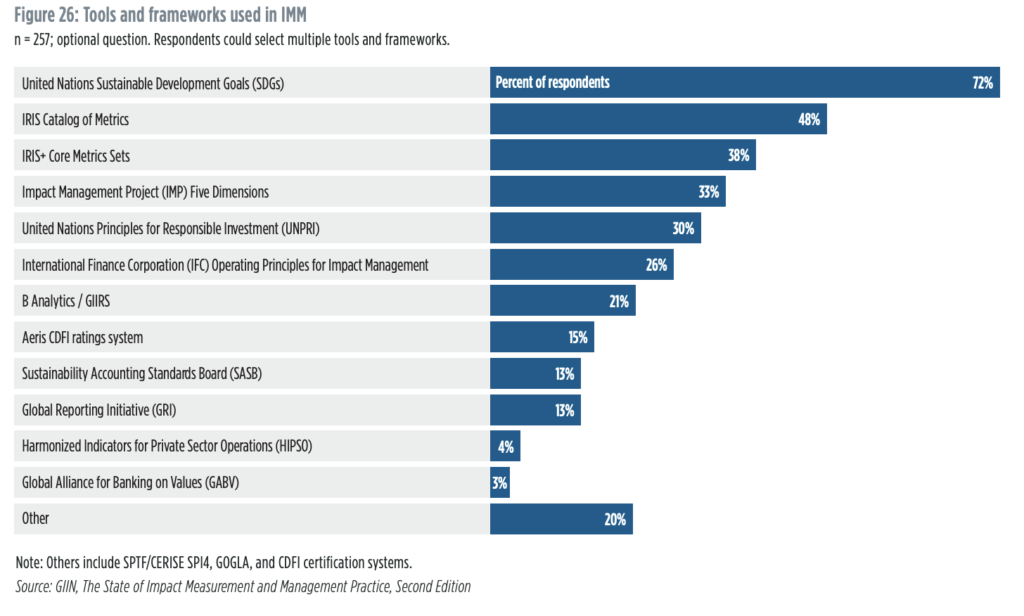

Most investors can use more than one framework, the common average is three. This development represents significant steps toward enabling investors to transparently and reliably measure and manage their impact [8].
Role of incubator and accelerators in the investing in impact scene
As one of the first “open door,” incubators and accelerators plays a critical role in developing a startup founder’s mentality regarding impact and business. As stated by Jockie Heruseon, VP Business Development of Telkomsel, incubators and accelerators also have the power as a gatekeeper; to set impact and social contribution as standard in the business ecosystem.
Accelerators and incubators have an important role to provide support, especially for very early stage (often pre-revenue) startups. Heruseon from Telkomsel shared his insight from years of experiences in the startup ecosystem;


Telkomsel, the parent company of TINC has taken up the space on supporting the startups and companies to integrate in impact by creating NextDev platform. NextDev is an early stage digital startup search and development platform in Indonesia that is oriented towards social impact. The program ranges from competitions to incubator programs like the NextDev Academy as well as the NextDev Summit.
Through similar programs, that are also encouraged by Tinc, founders can be introduced to open their mindset and integrate impact and sustainability lens as well as understand the benefit and importance of good governance that is advocated by the ESG. This will also allow startups to identify like minded investors to actually support and amplify their impact.
Resonated by The Rockefeller Foundation’s report on Impact Enterprise Acceleration, this is where accelerators and incubators like TINC are able to contribute as sort of a “matchmaker,” ensuring downstream impact VCs funds or other investors have access to a good deal-flow of investment-ready opportunities [9].
Looking to the Future
The impact business and impact investment extended its wings to emerge as a new conception of “Investing in impact,” where this impact becomes an arbitrage, an opportunity, a “new normal”– the smart investment to do on top of the right business and investment strategy [10].
Each player in the startup ecosystem has its own role, and therefore its own power. Investors provide the capital and the fuel, while incubators and accelerators play key roles in educating and building the mentality of the founders. All roles are equally crucial in the development of the whole impact ecosystem.
In the future, we hope to see more incubators and accelerators occupying the impact space to create a supportive environment for impact driven startups and impact investment practice can grow.


End of article.
Participating investors in the discussion:












Reena Sharma
VP Investor Relations
Investible
Faiz Rahman
Partner
Beenext
Rexi Christopher
Investment Associate
Init-6
Jockie Heruseon
Vice President
Business Development
Kejora-SBI Orbit
by Kejora Capital & SBI Holdings
This article is brought to you by:
Writer
Writer
Moderator







